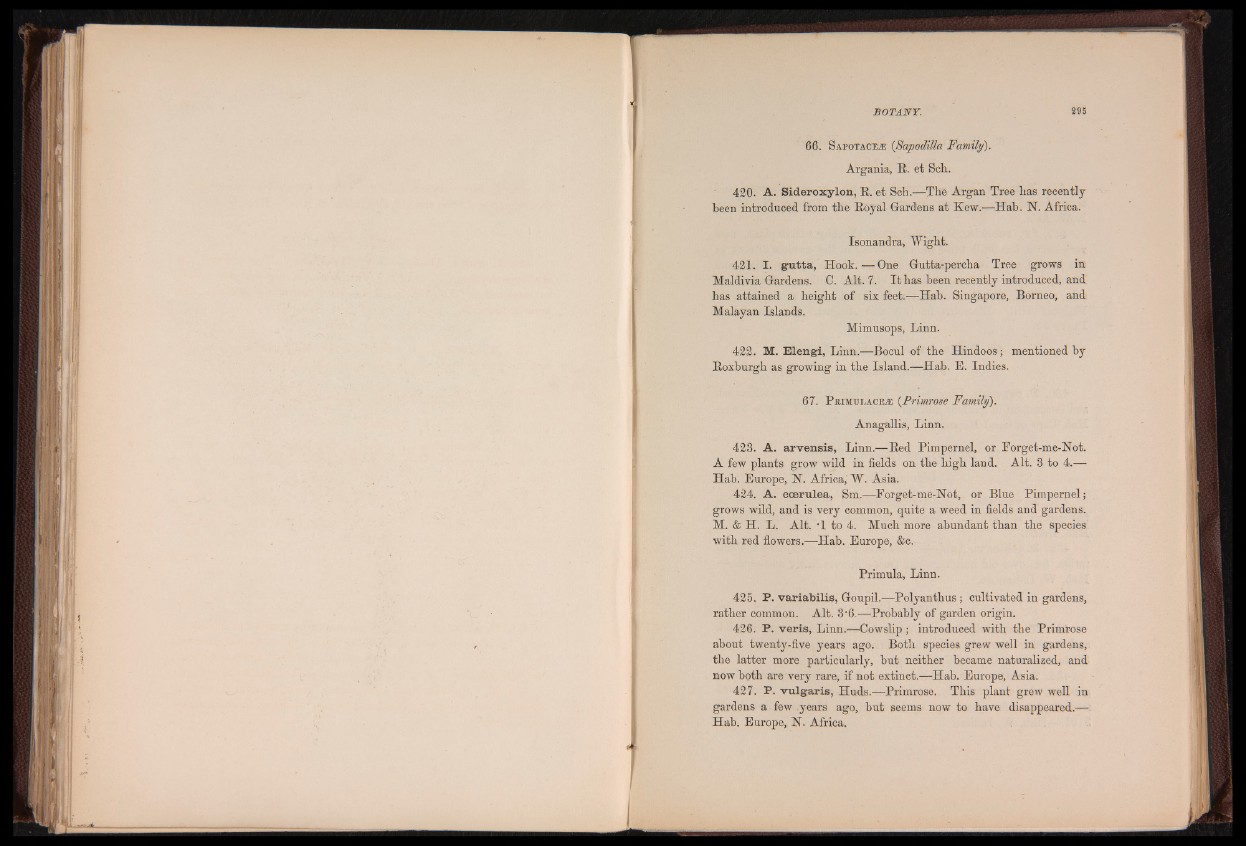
66. S a p o t a c e ® (Sapodilla Family).
Argania, E. et Sell.
420. A. Sideroxylon, E. et Sch.—The Argan Tree has recently
heen introduced from the Boyal Gardens at Kew.—Hah. N. Africa.
Isonandra, Wight.
421. I. g u tta , Hook. — One Gutta-percha Tree grows in
Maldivia Gardens. C. Alt. 7. I t has heen recently introduced, and
has attained a height of six feet.—Hab. Singapore, Borneo, and
Malayan Islands.
Mimusops, Linn.
422. M. Elengi, Linn.—Bocul of the Hindoos; mentioned by
Boxburgh as growing in the Island.—Hah. E. Indies.
67. P rimulace® (Primrose Family).
Anagallis, Linn.
423. A. arvensis, Linn.—Eed Pimpernel, or Forget-me-Not.
A few plants grow wild in fields on the high land. Alt. 3 to 4.—
Hab. Europe, UST. Africa,' W. Asia.
424. A. ccerulea, Sm.—Forget-me-Not, or Blue Pimpernel;
grows wild, and is very common, quite a weed in fields and gardens.
M. & H. L. Alt. -1 to 4. Much more abundant than the species
with red flowers.—Hab. Europe, &c.
Primula, Linn.
425. P. variabilis, Goupil.—Polyanthus ; cultivated in gardens,
rather common. Alt. 3-6.—Probably of garden origin.
426. P. veris, Linn.—Cowslip; introduced with the Primrose
about twenty-five years ago. Both species grew well in gardens,
the latter more particularly, but neither became naturalized, and
now both are very rare, if not extinct.—Hab. Europe, Asia.
427. P. vulgaris, Huds.—Primrose. This plant grew well in
gardens a few years ago, but seems now to have disappeared.—
Hab. Europe, N. Africa.